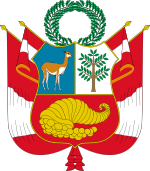Hermit House

Hermit House is an earthen residence situated on a cliff overlooking the Mediterranean near the Sidna Ali Mosque in Herzliya, Israel, and is an example of vernacular architecture. Its owner, designer, and creator, Nissim Kahlon, has been building the structure solely by hand since the late 1970s, tunnelling deep into the cliff side and using natural sea materials.The structure includes dozens of chambers covered in highly elaborate tile mosaics made of recycled materials such as blue glass from broken Maccabee beer bottles, plates, and other debris washed ashore. Local city authorities have so far been unable to oust the non-code-compliant resident. Rising sea levels, caused in part by the city's construction of a jetty, pose a threat to Cachlon's work of several decades. Hermit House's exterior is publicly visible and requests for interior tours are occasionally honoured by its owner.
Excerpt from the Wikipedia article Hermit House (License: CC BY-SA 3.0, Authors, Images).Hermit House
Galle Tekhelet,
Geographical coordinates (GPS) Address Nearby Places Show on map
Geographical coordinates (GPS)
| Latitude | Longitude |
|---|---|
| N 32.185976 ° | E 34.803708 ° |
Address
רשף
Galle Tekhelet
4664915 , Nof Yam
Tel Aviv District, Israel
Open on Google Maps











